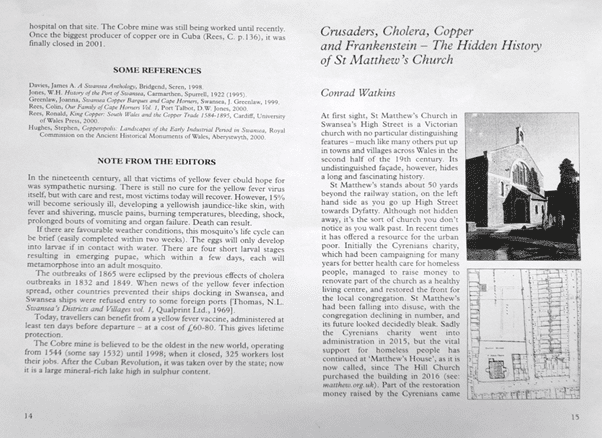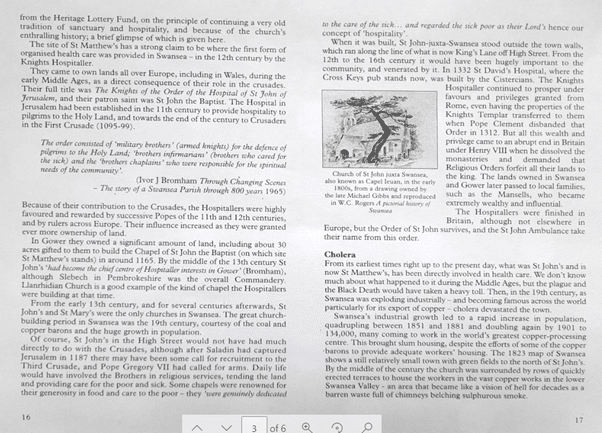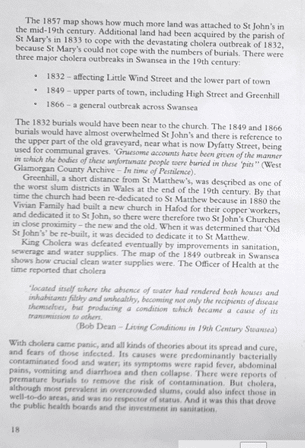The Cholera Outbreaks: Disease, Reform, and Resilience in Greenhill
In the 19th century, Greenhill was devastated by repeated cholera epidemics, which brought death, fear, and eventually public reform. These outbreaks exposed the vulnerability of the poorest residents—many of them Irish immigrants—and forced city authorities to confront the grim realities of overcrowded housing, poor sanitation, and political neglect. At the heart of this history lies a community that suffered deeply but also catalysed sweeping changes in urban health.
The 1849 Cholera Epidemic: Swansea’s First Major Shock
In 1849, cholera struck Swansea with ferocity. The worst-affected districts were Greenhill and Hafod, where appalling living conditions accelerated the spread of the disease. Most houses lacked running water and proper sewage. Open drains ran down the streets, overflowing with human and animal waste. Children played in these polluted streams, and some residents drank directly from them.
This crisis coincided with a wave of Irish immigration, as many families fled the Great Famine and settled in Greenhill. Densely packed and already impoverished, this population became both victims of disease and scapegoats for wider public anxiety. Anti-Irish prejudice was widespread, fuelled by religious and cultural divisions.
In the face of this, individuals like Father Charles Kavanagh, a Catholic priest newly arrived from Newport, stepped forward. Alongside Dr William Harris Long, he visited the homes of the sick and dying, often staying with families through the night. Kavanagh administered last rites, comforted grieving relatives, and is reported to have buried more than 170 victims himself. The mass burial site, known locally as the Cholera Pit, lies behind St. Matthew’s Church—now Matthew’s House—near the concreted yard space.
Contemporary accounts praise his tireless efforts. One obituary noted:
“He worked day and night, washing the victims, combing their hair, making their beds, and in the end, laying them out in their coffins.”
Estimates place the total death toll in Swansea from this epidemic at around 200–250 people, with Greenhill bearing the greatest loss (Forwood, 1991).
The 1866 Cholera Epidemic: Turning Point for Reform
Another cholera outbreak in 1866 again ravaged Swansea. While medical understanding of disease transmission had improved since 1849, many parts of the city—especially Greenhill—still lacked clean water, sanitation, and adequate housing. The outbreak prompted a shift from temporary relief to long-term structural intervention.
Slum clearance became a central policy. In particular, Alexandra Road, a densely packed neighbourhood near Greenhill, saw large-scale demolitions due to its unsanitary conditions. These areas had disproportionate death rates during the cholera outbreak and were described in public reports as breeding grounds for disease.
However, the reform process was not without resistance. Landlords—including figures such as Lewis Llewelyn Dillwyn, MP—sought financial compensation for the loss of their properties. Many had profited for decades from substandard housing and were reluctant to relinquish that income.
Lives on the Edge: The Human Cost
For those living through these outbreaks, the experience was harrowing. Families might lose several members in the space of days. Entire households were wiped out. Coffins piled up at cemeteries, and fear shaped every interaction. Survivors carried long-term trauma, yet the bonds of community grew stronger. Neighbours shared food and firewood, nursed one another, and stood by during funerals when families were too broken to continue alone.
The historical memory of these events is still etched into the landscape. At Matthew’s House, where the church once ministered to the dying, modern hospitality work continues in the same spirit of service.
Public Health Legislation and Reform
The impact of the cholera epidemics was not confined to grief. It became a catalyst for change. The Public Health Act of 1848 established local boards with powers to address water supply, drainage, waste removal, and disease control. Swansea slowly began to see significant improvements in its urban infrastructure. After 1866, pressure mounted to eliminate slums altogether, leading to further legislation and investment in housing.
These reforms laid the groundwork for modern public health. They also demonstrated that poverty was not merely a private misfortune, but a collective risk-a lesson still relevant today.
Legacy in Place
The site of the Cholera Pit—today a simple concreted area behind Matthew’s House—serves as a silent memorial. Though unmarked, it is a site of deep historical importance. It reminds us of the lives lost, the resilience of a neglected community, and the emergence of urban reform from crisis.
Through interpretive trails and continued community service, today’s Greenhill honours the memory of those buried there—not only as victims, but as catalysts for a healthier, more compassionate city.





